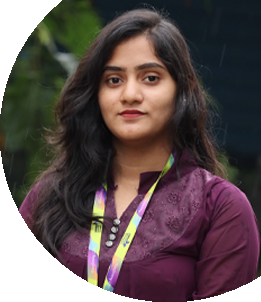CENTER FOR SYSTEM DESIGN (CSD)
About the CenteR:
The Center for System Design (CSD) started with the research facilities in the Analog & Digital system design and the areas of nanoelectronics and MEMS. The centre is actively involved in R & D as well as consultancy projects and has collaborations with several industries, academic institutes, and R&D organizations across the country. The laboratories are adequately equipped with state-of-the-art facilities.
Vision:
To be a world class research centre in the field of VLSI System Design and Nanoelectronics.Mission:
- Bring in a culture of system on Chip/System designing by developing working prototypes with societal applications using mostly in-house designed ASICs/ICs.
- Capacity building in the area of VLSI/Microelectronics and Chip to System development i.e. to train Special manpower in the area of VLSI Design and chips to Systems at BE/B.Tech,ME/M.Tech and PhD level.
- Broaden the base of ASIC/IC designing in the country.
- Broaden the R&D base of Microelectronics /Chip to system through “Network PhD” program.
- Facilitate the interchange of scientific results and ideas between Laboratory scientists and external centres of excellence.
- Promote “Knowledge Exchange Program”
- Promote the use of scientific results in applied research.
- Enhances the ability to perform research in a global community
- Promote protection of “Intellectual Property” generated under the program.
- Enhances researchers’ abilities to obtain and manage grants
Specific Objectives:
- Create International pool of expert team for various joint researches in Low power system design and MEMS.
- Create a university environment of innovation: CSD will bring together research and education across to foster multidisciplinary discoveries and inventions that arise through the mixing of students, faculty and researchers across traditional disciplinary boundaries.
- Integrate education and research: in addition to course work, graduate students will participate in research throughout their education; each CSD faculty member will both teach and engage in research.
- Lay the foundation for a world-class research centre that will help attract, create, and retain both Indian and international talent to CIT.
- Create External funding opportunities.
Research Areas
Area1: Digital VLSI Design, testing & Optimization
- Datapath, Timing and Power optimization
- Developing algorithms (Communication, Signal and image processing )
- ASICs, SoC, NoC
- UVM, VVM, OVM
- Artificial Intelligence, Machine Learning, and Deep Learning
Area2: Analog System Design (VLSI)
- Device level Architecture design
- Custom IC Design
- Software Embedded design (MEMS, MATLAB etc.,)
- Layout optimization in various PDKs
Area3: RF and Mixed Signal Design (VLSI)
- Amplifiers, converters, PLL, VCO etc.,
- Receiver, Transmitter and Synthesizer Design
- Digital Power Supplies and Power Conversion
- IC fabrication technology and device characterization (DC IV, Pulsed IV, CV, RF and Pulsed-RF etc.)
- RF, microwave and mm-wave front-end circuits: LNA, mixer, power amplifier, phase shifter, VCO and phase-locked loop (PLL)
- Millimeter-wave and THz communication circuits and systems for >10-40 Gbps wireless links
- Passive and active radar circuits and systems for imaging and sensing applications at RF to mm-wave and THz regions
- Low-power radio communication circuits and systems: low-power RF front-end architectures and circuits, on-chip energy harvesting circuits
Call for various Research positions
Centre for System Design (CSD) is an initiative of Chennai Institute of Technology. Being a blooming interdisciplinary research environment focused towards areas closely related to VLSI System Design, and MEMS, CSD looks for bright minds to strengthen its core human resource backbone.
Inviting applications for the various research positions (Regular/Visiting)
| Position | Educational Qualification | Areas | Publication record |
| Scientists | Ph.D in Engineering or related field with exceptional research records. |
1. Low Power VLSI Design 2. Digital VLSI Design, testing & Optimization 3. Analog System Design 4. RF and Mixed Signal Design 5. Reconfigurable digital filters |
Minimum of 20 research articles in Journals (SCIE) or a combined impact factor of 20 and above or h-Index of 15 and above. |
| Senior Research Fellow | Engineering and Technology group: Ph.D in Engineering preferably Electronics/Bio-medical/Computer science or related field. | Minimum of 3 research articles in Journals (SCIE) or a combined impact factor of 6 and above or h-Index of 3 and above. | |
| Junior Research Fellow | . Engineering and Technology group: ME/M.Tech in Engineering preferably Electronics/Electrical/Bio-medical/Computer science or related field. | Minimum of 2 research articles in Journals (SCIE) or a combined impact factor of 2 and above or h-Index of 2 and above. |
Retired Scientists / Researchers from Government Research Centres / Universities / Industries are also encouraged to apply. Salary is negotiable for deserving candidates. Interested applicants are requested to submit updated profile with publication details to [email protected]
List of Papers Published
| 1. Wang, R; Li, CB; Cicek, S; Rajagopal, K; Zhang, X , A Memristive Hyperjerk Chaotic System: Amplitude Control, FPGA Design, and Prediction with Artificial Neural Network , COMPLEXITY(2021) , Doi: 10.1155/2021/6636813. |
| 2. Anitha Karthikeyan, Murat Erhan Cimen, Akif Akgul, Ali Fuat Boz, Karthikeyan Rajagopal , Persistence and coexistence of infinite attractors in a fractal Josephson junction resonator with unharmonic current phase relation considering feedback flux effect , Nonlinear Dynamics ( IF 4.867 ) Pub Date : 2021-02-13 , DOI: 10.1007/s11071-020-06159-4. |
| 3. Wang, J.; Xiao, L.; Rajagopal, K.; Akgul, A.; Cicek, S.; Aricioglu, B. Fractional-Order Analysis of Modified Chua’s Circuit System with the Smooth Degree of 3 and Its Microcontroller-Based Implementation with Analog Circuit Design. Symmetry 2021, 13, 340. https://doi.org/10.3390/sym13020340. |
| 4. Volos, C.K.; Jafari, S.; Kengne, J.; Munoz-Pacheco, J.M.; Rajagopal, K. Nonlinear Dynamics and Entropy of Complex Systems with Hidden and Self-Excited Attractors. Entropy 2019, 21, 370. https://doi.org/10.3390/e21040370. |
| 5. Ramakrishnan, Balamurali & Durdu, Ali & Rajagopal, Karthikeyan & Akgul, Akif. (2020). Infinite attractors in a chaotic circuit with exponential memristor and Josephson junction resonator. AEU – International Journal of Electronics and Communications. 123. 10.1016/j.aeue.2020.153319. |
| 6. SelvamAthavan Alias Anand, Kiran George, Nisha Susan Thomas &SenthamaraikannanKabilan (2020) Synthesis, characterization and antitumor activities of some novel thiazinones and thiosemicarbazones derivatives, Phosphorus, Sulfur, and Silicon and the Related Elements, 195:10, 821-829, DOI: 10.1080/10426507.2020.1757672 |
| 7. R. Menaka*, R. Ramesh and R. Dhanagopal, “Aggregation of Region-based and Boundary-based Knowledge Biased Segmentation for Osteoporosis Detection from X-Ray, Dual X-Ray and CT Images”, Current Medical Imaging (2020) 16: 1. https://doi.org/10.2174/1573405616999200730175526 |
| 8. Dhanagopal, R., Muthukumar, B. A Model for Low Power, High Speed and Energy Efficient Early Landslide Detection System Using IoT. Wireless PersCommun (2019). https://doi.org/10.1007/s11277-019-06933-7 |
| 9. R. Janarthanan, Srinath Doss, S. Baskar,Optimized unsupervised deep learning assisted reconstructed coder in the on-nodule wearable sensor for human activity recognition, Measurement,Volume 164,2020,108050,ISSN 0263-2241, https://doi.org/10.1016/j.measurement.2020.108050. |
| 10. P. Saravanan, Nallapaneni Manoj Kumar, M. Ettappan, R. Dhanagopal, J. Vishnupriyan, Effect of exhaust gas re-circulation on performance, emission and combustion characteristics of ethanol-fueled diesel engine,Case Studies in Thermal Engineering,Volume 20,2020,100643,ISSN 2214-157X,https://doi.org/10.1016/j.csite.2020.100643. |
| 11. M. Ettappan, V. Vimala, S. Ramesh, V. ThiruppathyKesavan,Optimal reactive power dispatch for real power loss minimization and voltage stability enhancement using Artificial Bee Colony Algorithm,Microprocessors and Microsystems,Volume 76, 2020, 103085, ISSN 0141-9331, https://doi.org/10.1016/j.micpro.2020.103085. |
| 12. Dr. R. Menaka, Dr. R. Janarthanan, Dr. K. Deeba, FPGA implementation of low power and high speed image edge detection algorithm, Microprocessors and Microsystems, Volume 75, 2020, 103053, ISSN 0141-9331, https://doi.org/10.1016/j.micpro.2020.103053. |
| 13. Sundarambal, B., Subramanian, S. &Muthukumar, B. A hybrid encoding strategy for classification of medical imaging modalities. J Ambient Intell Human Comput (2020). https://doi.org/10.1007/s12652-020-02129-1. |
| 14. Menaka, R., Ramesh, R. & Dhanagopal, R. Behavior based fuzzy security protocol for wireless networks. J Ambient Intell Human Comput (2020). https://doi.org/10.1007/s12652-020-02060-5. |
| 15. Archana, N., Malmurugan, N. Multi-edge optimized LSTM RNN for video summarization. J Ambient Intell Human Comput (2020). https://doi.org/10.1007/s12652-020-02025-8. |
| 16. Janarthanan, R., Doss, S. &Balamurali, R. Robotic-based nonlinear device fault detection with sensor fault and limited capacity for communication. J Ambient Intell Human Comput (2020). https://doi.org/10.1007/s12652-020-01946-8. |
| 17. Kiran George, Immaculate Joy S., Nisha Susan Thomas, Balamurali R. &Baskaran K. (2020) Gender-Based Vegetarian and Nonvegetarian Dietary Impact on Cardiac Autonomic Function of Heart Rate Variability, Journal of the American College of Nutrition, DOI: 10.1080/07315724.2020.1753130. |
| 18. SelvamAthavan Alias Anand, Kiran George, Nisha Susan Thomas, SenthamaraikannanKabilan. (2020) Synthesis, characterization and antitumor activities of some novel thiazinones and thiosemicarbazones derivatives. Phosphorus, Sulfur, and Silicon and the Related Elements 195:10, pages 821-829. |
| 19. Muthukumar, B., Dhanagopal, R. & Ramesh, R. KYP modeling architecture for cardiovascular diseases and treatments in healthcare institutions. J Ambient Intell Human Comput (2019). https://doi.org/10.1007/s12652-019-01653-z. |
| 20. Balamurali, R., Chandrasekar, A. Multiple parameter algorithm approach for adult image identification. Cluster Comput 22, 11909–11917 (2019). https://doi.org/10.1007/s10586-017-1510-3. |
| 21. Eswara Narayanan, M, Muthukumar, B. A highly secured and streamlined cloud collaborative editing scheme along with an efficient user revocation in cloud computing. Softw: PractExper. 2019; 49: 1728– 1747. https://doi.org/10.1002/spe.2754. |
| 22. KarthikeyanRajagopal, FahimehNazarimehr, AnithaKarthikeyan, Ashokkumar Srinivasan, and SajadJafari , CAMO: Self-Excited and Hidden Chaotic Flows, International Journal of Bifurcation and Chaos 2019 29:11,https://doi.org/10.1142/S0218127419501438. |
| 23. V. Vimala, K. Ramar, and M. Ettappan. 2019. An Intelligent Sleep Apnea Classification System Based on EEG Signals. J. Med. Syst. 43, 2 (February 2019), 1–9. DOI:https://doi.org/10.1007/s10916-018-1146-8. |
| 24. NM Kumar, J Vishnupriyan, P Sundaramoorthi ,Techno-economic optimization and real-time comparison of sun tracking photovoltaic system for rural healthcare building – Journal of Renewable and Sustainable Energy, 11, 015301 (2019); https://doi.org/10.1063/1.5065366 |
| 25. S. Subramanian, B. Sundarambal and D. Nirmal, “Investigation on Simulation-Based Specific Absorption Rate in Ultra-Wideband Antenna for Breast Cancer Detection,” in IEEE Sensors Journal, vol. 18, no. 24, pp. 10002-10009, 15 Dec.15, 2018, doi: 10.1109/JSEN.2018.2875621. |
| 26. Rajagopal, K., Jafari, S., Akgul, A. et al. Modified jerk system with self-exciting and hidden flows and the effect of time delays on existence of multi-stability. Nonlinear Dyn 93, 1087–1108 (2018). https://doi.org/10.1007/s11071-018-4247-5 |
| 27. KarthikeyanRajagopal, SundarapandianVaidyanathan, AnithaKarthikeyan, Ashokkumar Srinivasan, Complex novel 4D memristorhyperchaotic system and its synchronization using adaptive sliding mode control, Alexandria Engineering Journal,Volume 57, Issue 2,2018,Pages 683-694,ISSN 1110-168,https://doi.org/10.1016/j.aej.2017.01.044. |
| 28. AnithaKarthikeyan, KarthikeyanRajagopal, Dennis Mathew, Fractional order nonlinear variable speed and current regulation of a permanent magnet synchronous generator wind turbine system,Alexandria Engineering Journal,Volume 57, Issue 1,2018,Pages 159-167,ISSN 1110-0168,https://doi.org/10.1016/j.aej.2016.10.003. |
| 29. Rajagopal, K., Vaidyanathan, S., Karthikeyan, A. et al. Erratum to: Dynamic analysis and chaos suppression in a fractional order brushless DC motor. ElectrEng 99, 735 (2017). https://doi.org/10.1007/s00202-016-0462-6 |
| 30. Rajagopal, K., Karthikeyan, A. & Srinivasan, A.K. FPGA implementation of novel fractional-order chaotic systems with two equilibriums and no equilibrium and its adaptive sliding mode synchronization. Nonlinear Dyn 87, 2281–2304 (2017). https://doi.org/10.1007/s11071-016-3189-z |
| 31. KarthikeyanRajagopal, LaaremGuessas, SundarapandianVaidyanathan, AnithaKarthikeyan, Ashokkumar Srinivasan, “Dynamical Analysis and FPGA Implementation of a Novel Hyperchaotic System and Its Synchronization Using Adaptive Sliding Mode Control and Genetically Optimized PID Control”, Mathematical Problems in Engineering, vol. 2017, Article ID 7307452, 14 pages, 2017. http://doi.org/10.1155/2017/7307452 |
Center Members
| Dr.Dhanagopal Ramachendran | Director |
| Dr. Suresh Kumar Rajagopal | Senior Research Faculty |
| Dr.R.Menaka | Research Faculty |
| Eric Clapten J | Research Faculty |




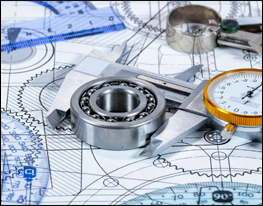







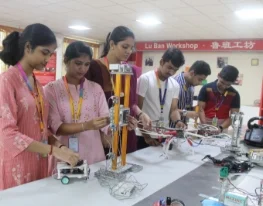
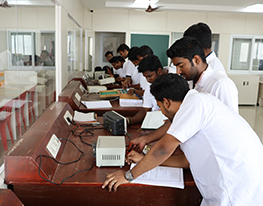

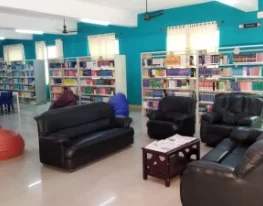

 Center of Excellence
Center of Excellence